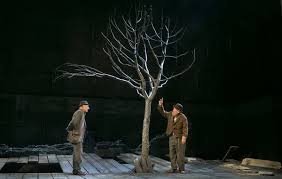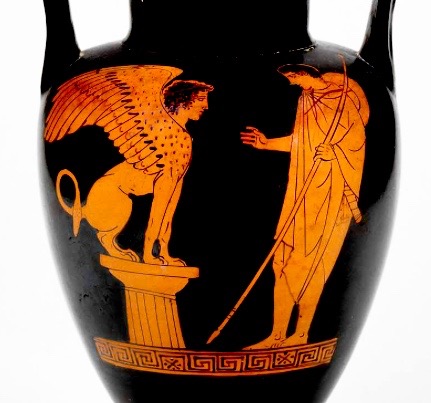The Adventure of Huckleberry Finn
Major Characters:
Huck Finn-
Huck is the hero, and narrator of the work, abused and kidnapped by his drunken father until he fakes his own death and runs away. It is Huck‘s vision through which readers will see other characters and events of the novel and his resolution to the moral dilemmas with which he is faced. From the beginning of the novel, Twain makes it clear that Huck is a boy who comes from the lowest levels of white society. His father is a drunk and a cruel person who disappears for months on end. Huck himself is dirty and often living rough. Although the Widow Douglas attempts to improve and to civilize him, he rejects her attempts and maintains his independent ways. The society has failed to protect him from his father, and although the Widow finally gives Huck some of the education and religious guidance that he had missed, he has not been indoctrinated with social values in the same way a middleclass boy like Tom Sawyer has been. Huck‘s distance from normal society makes him cynical of the world around him and the ideas it passes on to him. Huck‘s instinctual disbelieve and his experiences as he travels down the river force him to question the things society has taught him.
Huck’s life in town is abruptly ended when his father returns and kidnaps him, hoping to lay his hands on Huck’s fortune. But Huck escapes by faking his own death, and he heads to Jackson’s Island. There he meets up with Jim, Miss Watson’s slave, who has run away because of her threat to sell him “down the river.” The two of them embark on a journey down the Mississippi River and live a life of freedom on the raft, which has become their refuge from society. On their trip, Huck confronts the ethics he has learned from society that tell him Jim is only property and not a human being. By this moral code, his act of helping Jim to escape is a sin. Rather than betray Jim, though, Huck decides, “All right, then, I’ll go to hell.” Huck learns to decide for himself in various situations the right thing to do.
Huck defers to Tom Sawyer, whose outlandish schemes to free Jim direct the action. Huck is no longer in charge, and his moral quest appears to have been abandoned. But once Jim is freed, Huck decides he will “light out for the Territory” to escape the civilizing influence of another mother figure, this time Tom’s Aunt Sally. For some critics, this decision redeems Huck from the charge that he has allowed Tom to distract him from discovering his inner code of ethics. To others, it means that Twain sees no hope for civilization to redeem itself: because it cannot rid itself of fundamental failures like slavery, someone like Huck must escape its influence altogether. Even, we can call Huck’s attributes his virtues, because Huck, like his creator, is essentially an enlightened rationalist, though retaining considerable zest for the romance of superstitions. He is something more naturalistic and buoyant.
Jim-
Jim, a runaway slave who has escaped from his owner, Miss Watson, for fear of being sold to a plantation in New Orleans, is Huck Finn’s companion as they travel on a raft down the Mississippi river. At first look, Jim seems to be superstitious to the point of idiocy and stupidity, but a careful reading of the time that Huck and Jim spend on Jackson‘s Island reveals that Jim‘s superstitions conceal a deep knowledge of the natural world and represent an alternate form of intelligence. Moreover, Jim has one of the few healthy, functioning families in the novel. Although he has been separated from his wife and children, he misses them terribly, and it is only the thought of a permanent separation from them that motivates his criminal act of running away from Miss Watson. On the river, Jim becomes a substitute father, as well as a friend, to Huck, taking care of him without being intrusive or smothering. He cooks for the boy and shelters him from some of the worst horrors that they encounter, including the sight of Pap‘s cadaver, and, for a time, the news of his father‘s passing.
Critics have argued, Jim is once again cast as a shallow caricature of a gullible slave, and the novel’s serious theme of race relations is reduced to a farce. But other critics have seen a consistency of character in Jim throughout the book, as a slave who wears the mask of ignorance and docility as a defense against white oppression, occasionally giving Huck (and the reader) glimpses behind the mask. Forrest G. Robinson has argued that Jim learns Huck “is quite unprepared to tolerate the full unfolding of the human being emergent from behind the mask,” and so the real Jim retreats in the last third of the book to ensure that Huck will continue to help him. But according to Chadwick Hansen, Jim is never a “fully-rounded character” in his own right; rather he serves the function of making Huck confront his conscience and overcome society’s influence.
Tom-
Tom is the same age as Huck and his best friend and foil, gives Huck access to complicated adventures found within the romantic novels he reads and tries to recreate in his own lies and pretend adventures. Whereas Huck‘s birth and upbringing have left him in poverty and on the margins of society, Tom has been raised in relative comfort. As a result, his beliefs are an unfortunate combination of what he has taught from the adults around him and the imaginary notions he has exposed from reading romance and adventure novels. Tom believes in sticking severely to r system, most of which have more to do with style than with morality or anyone‘s happiness. Tom is thus the perfect foil for Huck: his firm loyalty to rules and precepts contrasts with Huck‘s tendency to question authority and think for himself.
Although Tom’s escapades are often funny, they also show just how terrifyingly and unthinkingly cruel society can be. Tom knows all along that Miss Watson has died and that Jim is now a free man, yet he is willing to allow Jim to remain a captive while he entertains himself with fantastic escape plans. Tom‘s plotting tortures not only Jim, but Aunt Sally and Uncle Silas as well. In the end, although he is just a boy like Huck and is appealing in his enthusiasm for adventure and his unaware joking, Tom exemplifies what a young, well to-do white man is raised to become in the society of his time; egotistical with dominion over all.
Main Topics:
Anti-racism:
In the novel, Twain portrays a racist society of 1830s in an American southern state, Hannibal. The word nigger might have been offensive at the time of the publication of the novel. But, it was a part of the language of the society of the 1830s. Huck, a close companion of Jim, also uses the word in the novel. But it is not to be forgotten that he is a boy who has imbibed the traditions and values of that society. When the whites use the word to refer to a black, it reflects the narrow perspective of the whites rather than the false inferiority of the blacks. Twain satirically presents the society that classifies the blacks like Jim as less than human. The word nigger is central to portraying both society and the people in it with accuracy. The word nigger was used to mean to deny the personhood and humanity of the person to whom it refers. It was a racist slur that could hurt the black children, as they listened to their teachers reading the word aloud in the classroom. The least, the black parents pained by the slur could do, were to go out and ban the book that contained the word. The point to be taken to consideration is that Twain was talking about the customs of a society that existed half a century before the publication of the novel. If the society of 1884 could not endure that word, it shows that America was still unable to eradicate racism completely from among its people. The word nigger is offensive. So is slavery. Only when people are ready to conceive racism as a part of history can they stop debating about the presence of this offensive word in the novel. The book has to be taught in the context of history of American race relations. Students should be taught to grapple with the book‘s irony. Then the novel becomes “an enormously important book to keep in classrooms, an important weapon in the ongoing battle against racism”.
Another reason for attacking the book as a racist one was the stereotypical images of Jim in the novel. But the interpretations which read Jim as a merely superstitious, illiterate black are part of a narrow, limiting reading. Jim‘s folk beliefs have naturalness, simplicity and truth in it. When Jim seeks truth and logic in everything, he becomes a strong contrast and a solution to all the hypocritical the whites in the novel. The stereotypical characterization is the only possible starting point for a white author who attempts to deal with the black character a century ago. Twain portrays Jim as a black who does not understand the racist underpinnings of an ideology that prompts him to escape. In 1830, the whites’ tendency to make everything right for themselves was not supposed to be questioned by a black. But the white writer in Twain is not blind to the humanity in Jim. There are many episodes which highlight the humanity in Jim.
Even though Huck Finn was raised in a society dominant of racist values, as the novel progresses, Huck‘s feelings on racism change. Through the device of satire, Twain shows the foolishness of racism within the very first few chapters, it arises through the character of Pap; when he gets drunk one night, he goes on to explain how the government is so wonderful. He speaks of a “black man, who was a p‘fessor in a college, and could talk all kinds of languages….”. The worst thing to Pap, though, was that the black man could vote, he says, “this country where they‘d let that nigger vote …. I say I‘ll never vote again”. The absurdity of racism is shown in this instance with irony. Pap wouldn‘t vote just because the fact that one state was letting a black man vote; a black man that was of higher civilization and realization than Pap. In reality, it was more appropriate for the black man to be voting than for drunken Pap to be. Another instance of racism is shown when Huck arrives at Aunt Sally‘s, and fabricates a story of how a cylinder-head was blown. When Aunt Sally asked “anybody hurt” Huck replied, “No‘m. Killed a nigger”. Aunt Sally is calmed and replied with “Well, it‘s lucky because sometimes people do get hurt”. Aunt Sally acts as if a nigger being killed means as nobody getting hurt. Twain includes many satirical instances of racism throughout the entire novel to show the foolishness of racism that was, and still is, in the world.
Racism is a constant theme in American literature. It is interesting to note that a major proportion of the published writing of Afro-Americans, even when not directly countering racist mythology, has been concerned thematically with the issues of race. But it is hardly surprising that it occurs in a country where black people still struggle to assert their individuality. Though the black creativity had passed through many strong stages of development which resulted in the origin of the Harlem Renaissance (1919-40), Negritude movement (1930), NAACP (National Association for the Advancement of the Colored People (1909), National Urban League (1910) etc, the economical and political constraints on Afro-American could not find any permanent end. When Martin Luther King expressed a dream of a day when black and white children would hold their hands together, and even when Langston Hughes sang ―I, too, sing America / I‘m the darker brother,‖ there was a strong tinge of hope for a day when whites would realize that the most binding element in all human beings is one and the same, love. But when Afro-Americans have to manage processions in post modern America to show the black pride and solidarity (Million Man March in 1995, Million Woman March in 1997 etc) to the government, it repeatedly poses the unresolved problem in America, i.e., racism.
Realism-
It is the major aspect that the author uses; realism is an aesthetic style with the classical desire of art to indicate life as it should be for the sake of showing life as it is. William Dean said: “Realism is nothing more and nothing less than the truth full treatment of material”. Twain employs several examples of realism in the way he wrote “The Adventures of Huckleberry Finn”. Twain explores the innocence and naivety of society when the duke and king go to the camp meeting and collect money from the poor, unsuspecting, church-going people. Twain also reveals examples of realism through the dialect that his characters use in the novel. The detailed descriptions of the river and nature are also realist observations. Twain’s river is a mirror in which are to be found the reflections of wood and shore; but when Huck says “and the east reddens up, and the river” there is no authorial indication that the river reflects the red of the sky, for his world need not answer to the laws of optics. The phenomenon is local to his perception; it would not occur to him that the scene is an “effect.” Huck’s river at dawn is shifting impressions first and only incidentally a world of objects—the “little dark spots,” we are told by way of an appositive, are trading scows; the “dull line,” the woods; the “long black streaks,” rafts. His world is populated by things, but they don’t authorize his experience. And he does not belabor the mental corrections necessary to make such a world.
In his book, he utilizes the real vernacular used at the time, which really demonstrates the realist qualities that he possesses. Throughout the book, Twain includes many different dialects including ―the Missouri Negro dialect and the ordinary Pike County dialect in order to add credibility and realism to the story. Other examples of realism happen throughout the setting. The story takes place in St. Petersburg and on the Mississippi, near Twain‘s place of birth. In particular, Twain makes use of the episodes of realism as a way to satirize society.
One of the things to be observed about the realism of Huckleberry Finn is that Huck’s voice functions much like Whitman’s multivalent “I” in “Song of Myself ” – he is the narrator of his chronicle and the author of his book; he is the chief witness of events and, emotionally at least, the principal victim of them; he is ruled and to a degree protected by the laws of the republic and the customs of place, but only accidentally a citizen of and never a voice in the dominant culture that so mystifies him.
Satire-
Satire, another element in Twains writing, occurs many times throughout his novel as well. His technique is known as the Southern humorist style with an element of satire in them. A convincing example of satire occurs in the first chapter when Huck says, “By and by they fetched the niggers in and had prayers, and then everybody was off to bed”. This pokes fun at the fact that Miss Watson attempts to become a better Christian and a better person but she still owns slaves and considers them property. Another satisfactory example of satire occurs when Pap becomes outraged at the thought of a black man having the opportunity to vote. However, the black man actually has more education than Pap. Twain uses the Boggs-Sherburn event to include more satire. When Boggs enters the story he says he has come to murder Colonel Sherburn. Sherburn then proceeds to shoot Boggs and the town’s people plan to hang him. Sherburn laughs in their faces and says to them, “you are – cowards”. Finally the crowd breaks up and moves on.
Another example of satire occurs when Huck goes to the Phelps plantation and sees the two frauds, the king and the duke, tarred and feathered. He points out that “human beings can be awful cruel to one another”. Twain includes numerous examples of satire throughout the novel. Twain used the families the Grangerfords and Shepherdsons that Huck met during his journey down the Mississippi River, to emphasize his obscure satire on religion, because the two families attend the same church, leaning their guns against the walls during the sermon about “brotherly love.” The combination of religion and gunplay is ironic, as well as the intention of the two families to continue to battle despite that they don‘t know why they persist to fight is ironic.
Seeing that with the satire of the camp meeting of the two frauds; the Duke and the King, the parody of Shakespeare is another aspect of humor that Twain uses for comic effect. The humor increases when the king confuses “orgies” with funeral “obsequies,” and his explanation of the Greek and Hebrew origins of the word only adds to the ridiculousness of the scene, the entire plan that Tom made to rescue Jim Phelps family becomes a comical and romantic such as a tunnel and devices such as a rope ladder . Another facet of satire when Tom says that Jim needs to keep a journal, Huck replies, “Journal your granny — Jim can’t write”. Huck’s response is both humorous and revealing at the same time that Jim does not need to keep a journal, The ability to read and write was not common among anyone in the mid-1800s, and because Jim is merely a common slave.
The bitter satire is obvious when Huck wonders about the logic of digging a tunnel with ordinary case-knives. When he questions Tom, Tom replies that “It don’t make no difference how foolish it is, it’s the right way . . . . And there ain’t no otherway, that ever I heard of, and I’ve read all the books that gives any information about these things”. Another element of satire that Twain mentioned at the end of the story When the slave Jim scarified his freedom for Tom by staying with him until the Doctor come but eventually Tom realizes that Jim has been recaptured, he declares that “They hain’t no right to shut him up! Shove! — and don’t you lose a minute. Turn him loose! heain’t no slave; he’s as free as any creature that walks this earth!”. Tom’s statement, then, is one of Twain’s harshest and most ironic comments on the American condition before and after the civil war.
Important Questions for Preparation:
A. Discuss the role of Jim in the novel The Adventure of Huckleberry Finn by Mark Twain. (10)
B. Humor is a tool which Mark Twain uses in The Adventures of Huckleberry Finn to satirize the evil in the society. – Explain. (10)
C. Realism is one of the major aspects of The Adventures of Huckleberry by Mark Twain. – Discuss. (10)
a. Analyze the relationship of Huck and his father. (5)
b. Huck’s journey on the river is filled with adventures, but it is also a symbolic journey. – Explain. (5)
c. At the end of the novel Huck wants to escape so Aunt Sally will not try to “sivilize” him. How has the meaning of the word “sivilize” changed for Huck? (5)





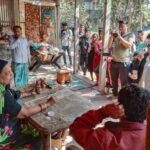



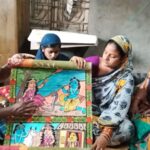
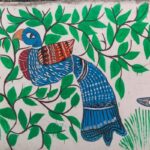
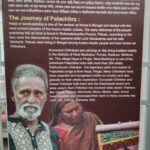
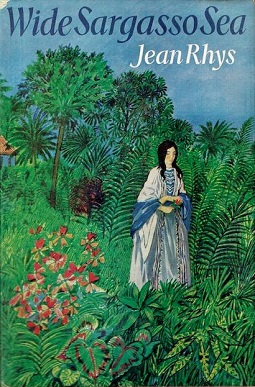 Wide Sargasso Sea by Jean Rhys (PG IV)
Wide Sargasso Sea by Jean Rhys (PG IV)